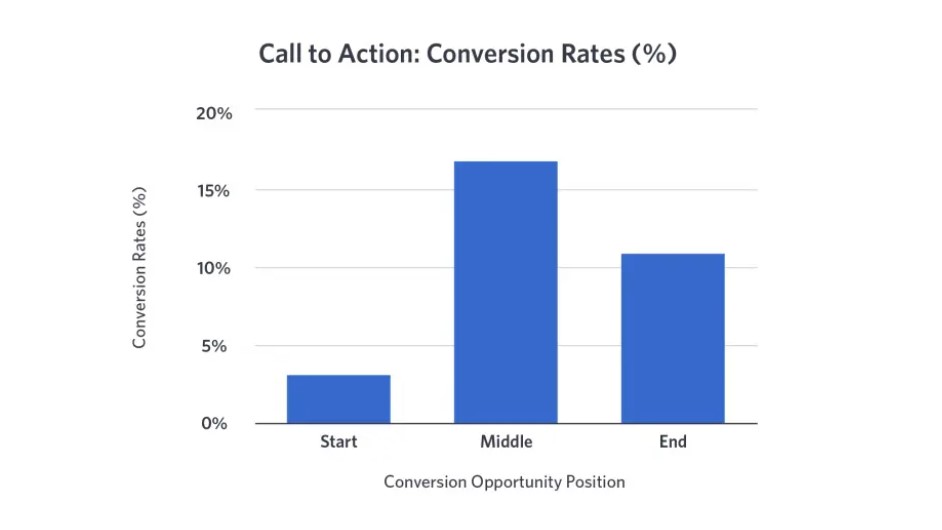Direct Email Marketing: Everything You Need to Know
Think for a moment: how many emails do you receive per day, and how full is your inbox?
Chances are you are overwhelmed by communications of all sorts, as brands are increasingly using email marketing to connect with their audience with the aim of increasing their engagement and loyalty.
Today, we will show you how to perform email marketing effectively using direct email marketing. We will explain in detail what it is and other useful information.
Let’s get going!
What is direct email marketing?
Direct email marketing (DEM) is a strategy of email marketing, referring to an email campaign that is sent directly to subscribers. The purpose is to sell more of your products/ services and improve customer relationships with personalized, intentional email content.

Direct email marketing campaigns are often sent to targeted clusters of customers. They aim to target bespoke content with people who are most likely to want to see it (and hence most likely to click-through and convert it into purchases).
Besides, direct email marketing is generally permission-based opt-in email, rather than unsolicited commercial email (UCE). Generally, a campaign will have a particular, quantifiable target in mind based on key performance indicators (KPIs), such as increased traffic, clicks, conversions, or purchases.
In short, direct email marketing is a mutual exchange between brand and consumer.
Does direct email marketing still work?
In spite of its credentials, many people are of the opinion that direct email marketing has had its day. That the modern customer is just not interested in this kind of content anymore. However, the numbers tell a very different story.
- 81% of B2B marketers believe that email marketing is the best way to send content and newsletters.
- 59% of customers say that promotional emails have influenced their purchasing decisions.
- Shoppers can spend 138% more when being marketed via emails, compared to those who don’t receive offers via emails. (These above statistics are compiled by AVADA Email Marketing)
Direct email marketing does still work. But it has to be done right.
When done right, direct email marketing is a great platform. It reaches a large (highly targeted) audience while engaging, interactive, memorable, and seriously personalizable. If your direct email marketing campaigns stand out against the crowd, they are sure to generate consumer interest and increase your ROI (Return on Investment).
Pros and cons of direct email marketing

As a matter of fact, when direct email marketing falls short of its potential, it is more often than not the result of poor execution.
Let’s take a look at these commonly reported pros and cons to see for yourself.
Pros:
- Segmentation helps establish relationships with your prospects. If your segmentation is relevant, prospects will need your products and services.
- By personalizing emails, you can increase email open rates.
- You can optimize your campaign performance by checking your email open rates, click-throughs, and conversions.
Cons:
- If you don’t segment your email list correctly, it won’t bring in any results, and you’ll have spent your money in vain.
- People who aren’t interested in your products/ services may not only ignore your email but even send it to their spam folder.
With this in mind, we can say that direct email marketing, if done right, is totally worth your while. But how can we ensure that our efforts aren’t in vain? How can we guarantee our budgets are well-spent and bring in those conversions at the end of the day?
That’s exactly what we are going to talk about next.
Do’s and don’ts of direct email marketing
When it comes to your direct email marketing strategy, there are several simple do’s and don’ts. Abiding by these principles can take you far, and make sure that your campaigns are fit for purpose.
Now, it’s time to let you into some secrets.
1. Do use personalization
Personalization is so critical when it comes to any type of marketing.
Customers always expect to be treated as valued individuals. Actually, personalized emails benefit from a staggering 50% improved open rate on average. This means ditching generic greetings and addressing recipients by name, with catchy text and vibrant graphics, too.
Read more:
2. Do include CTAs
A CTA (call to action) should be a mainstay of every single email.
Even with great, engaging copy, your recipients are unlikely to navigate their browser to find your product. Instead, they expect a direct link to exactly what your email is advertising.
The best way to encourage more clicks is with a catchy and converting CTA. Depending on your own desired outcome, it could be a link to your social media presence, a subscription sign-up, educational content, or a specific purchase.
Do you know that 90% of readers who read your email headline also read your CTA copy? Besides, studies show that placing your CTA in the middle can garner the best result.

3. Don’t neglect your email subject line
Your email subject is essential. It’s the key to any first click.
So, make sure that email your subject line is direct, to-the-point, and engaging. It should stand out in your recipients’ crowded inbox, while making them want to see the content that dwells within.
In addition, your email subject line is another opportunity for personalization. Research suggests that emails with personalized subject lines can receive 50% higher open rates than their counterparts.
For more tips & ideas on writing a high-converting email subject line, read our following blog posts:
- How to Write Best Subject Lines for Open Rates?
- The Guide for Email Subject Line Testing
- 99 Tempting Email Subject Lines for Spring Season
- 33 Holiday Email Subject Lines and Most Favored Emojis
- 33+ Best Thanksgiving Email Subject Lines
- 32+ Best Halloween Email Subject Lines
4. Don’t forget to proofread
Our school teachers might have carefully taught us to proofread our work, but that is one lesson that we as adults often choose to forget. However, proofreading your email content is essential.
Your emails are considered a direct reflection of your business. If your emails are full of typos and grammar mistakes, they’d speak of unprofessionalism and distract recipients from engaging with your content fully.
Spelling mistakes and bad design will also make your emails look like spam - and we all know what that means. It means nearly zero engagement and immediate trash-canning (or worse-unsubscribing altogether).
5. Don’t forget to follow-through
You would make a big mistake if you forgot to follow-through. There’s no use sending out an email marketing campaign and leaving it to the universe to do as it will.
Successful marketers often track, track, and track again with precision metrics and KPIs. This means analyzing how your recipients are responding to your emails and how to follow up with them in a personal and effective way, at a later date. Build a subscriber list of your most engaged audience and target them for future messaging.
3 direct email marketing strategies
When it comes to developing your own direct email marketing campaign, the first step is always to create a clear, intentional strategy.
Before sending out any content, you need to be clear about who your target audience is, create an optimized mailing list, as well as time your content distribution for optimal results.
Moreover, during and after the campaign, you should follow comprehensive testing of your outputs using key performance metrics. This will help monetize your success and improve upon weak spots in any future direct email marketing campaigns.
Therefore, let’s talk about strategy.
In skeletal form, a typical direct email marketing campaign is boiled down to 3 essential stages. They are:
- Targeting your audience
- Creating email lists
- Testing your emails
Let’s have a closer look!
1. Targeting your audience
Audience segmentation is critical for any successful direct email marketing campaign. You should stop talking to as broad an audience as possible, and start focusing on those that really matter.

In order to create high-value content, it needs to be specific, and speaks to your target customers. That said, your first step is to identify your unique target audience. Just ask yourself:
- Who is best suited to your product/ service?
- When are they most engaged online?
- Where are they?
Honing in on a particular market group will reduce the amount of money spent blindly on targeting the masses. You will spend less and receive more in return. Your email list will mean nothing if the people listed in it aren’t the right fit for your products or services.
Once you have honed in on your desired audience, you can tailor your content to meet their interests and expectations. For new customers, remember to focus on educational material and welcome offers. For long-time ones, think upselling.
2. Creating email lists
You have located your target. Now all you need is a killer email list.
The quality of your email list is one of the single most important guarantors of a positive response. Your own email list is excellent for increasing response rates (that’s because these people have “brought-in” to your business before).
The best way to generate a foolproof email list is to gather leads wherever you can. Think email addresses as well as phone numbers for SMS marketing. For instance, customer lists, previous purchases, or responses are a great place to get started.
Hold on to this data in a database. However, ensure to clean it up from time to time and always encourage your subscribers to update their details periodically.
Learn more:
3. Testing your emails
One of the best things about direct email marketing is the ease of testing. Just think about how challenging it was to measure consumer responses to door-to-door or letterbox-based direct mail campaigns.
In order to see how your direct email marketing campaign is faring, it is essential to test individual performance metrics along the way.
Before delivering your emails, test them out on colleagues across various devices. It is important that your campaign offers full deliverability on desktop, tablet, and mobile.
You could also try:
- A/B testing (split testing) - which content gets the best response?
- Test various offers and discounts - which promotions get the best result?
- Test different timings - when can you send out emails for the best result?
- Test different subject lines or headlines - which encourage the most clicks?
- Check your GDPR and ensure your marketing strategy is compliant.
4 direct email marketing metrics you can’t ignore

Given the personalized nature of a direct email marketing campaign, it is easier to gauge than other forms of marketing. Because viewers can’t interact with TV ads, there is no metric to calculate the relationship between an action and the ad.
If you’d like to know how to measure the effectiveness of direct email marketing, the following are the common metrics you should pay attention to.
-
Open rate. Your email open rate indicates the percentage of people who opened your emails. This metric is vital to assess the engagement of your mailing list.
-
Click-through rate. This is the percentage of times your subscribers interacted with your emails by clicking.
-
Delivery rate. Your delivery rate indicates the percentage of emails delivered from the sender’s server to the recipient’s server (all messages for which no bounce is recorded). So, it evaluates the quality of your database.
-
Conversion rate. This indicates the percentage of people who have interacted with your communication by completing the desired action.
Choose AVADA Email Marketing for your next direct email marketing campaign
There are a number of email marketing tools out there to help you run your direct email marketing campaign. However, AVADA Email Marketing is believed to give you the best results.
AVADA Email Marketing is simple to understand for any user - both first-time and seasoned professionals. This platform provides the following outstanding features:
-
Smart segmentation. You can make your emails highly relevant to recipients. AVADA Email Marketing helps you send the right messages to the right people at the right moment with its advanced segmentation.
-
Amazing forms. It’s easy to collect emails with AVADA Email Marketing. You can also deliver promo and helpful content or updates to your visitors via newsletter popup, spin-to-win, inline form, etc.
-
Beautiful and converting email campaigns. The platform offers stunning templates for various brands. You can start sending your direct email marketing campaign in minutes with a simple drag-and-drop editor!
-
Automation workflows. You don’t need to send every single email manually. With its prebuilt automation email series, you can follow up with your audience at any touchpoint.
-
Stellar customer service. The AVADA support team is well-known for their friendly, knowledgeable, and professional help. You can get instant help and solve your problems quickly.
The platform offers a free plan with the necessary features, so you can take advantage of it and test it out today!
TRY AVADA EMAIL MARKETING FOR FREE
The bottom line
Direct email marketing is actually one of the winning forms of communication for direct contact with customers, and has a much higher ROI when compared to other communication tools.
We hope this guide has given you something for your next direct email marketing campaign. If you have any concerns about email marketing, feel free to contact us! We’re always happy to help you!
New Posts






